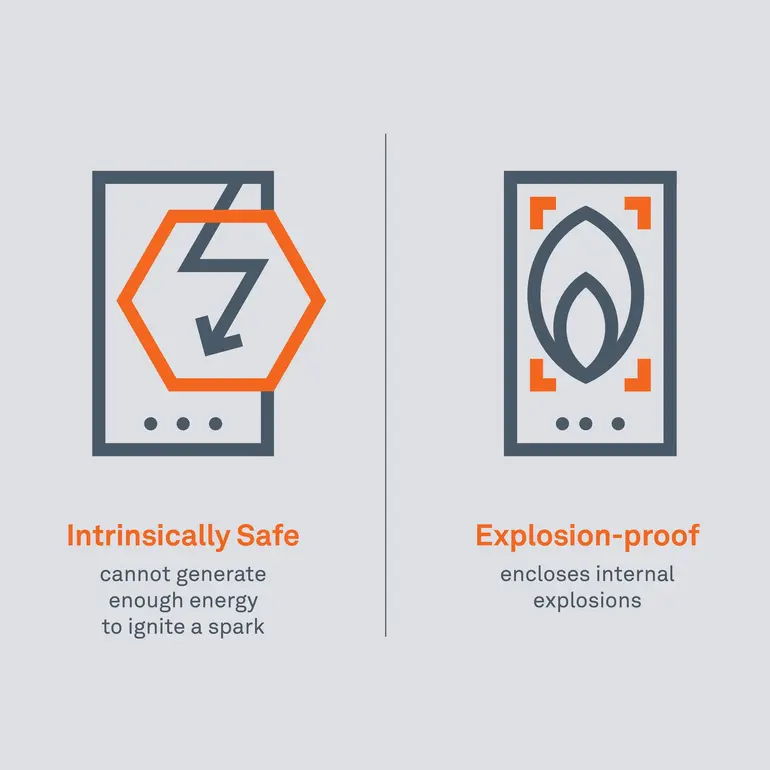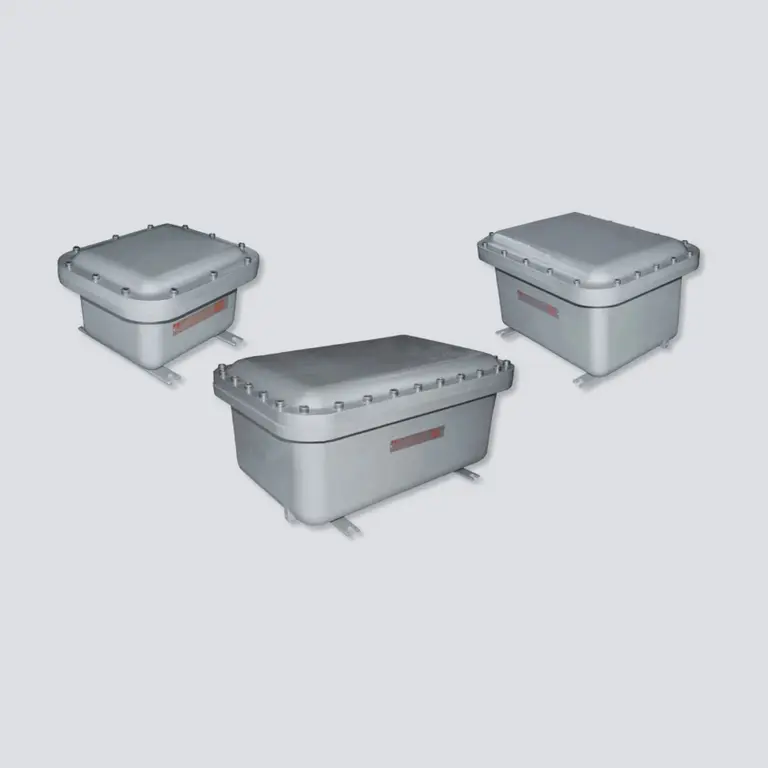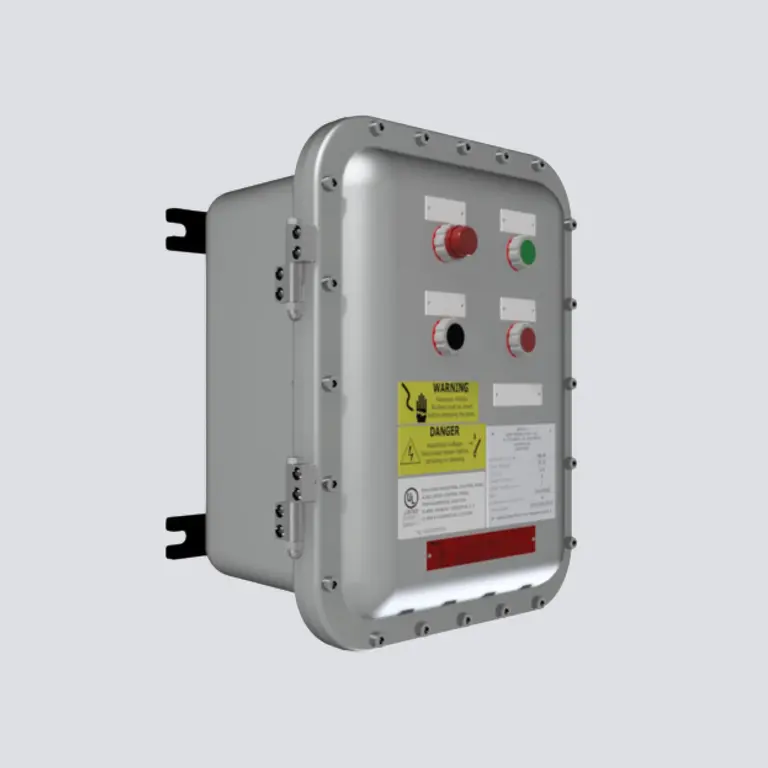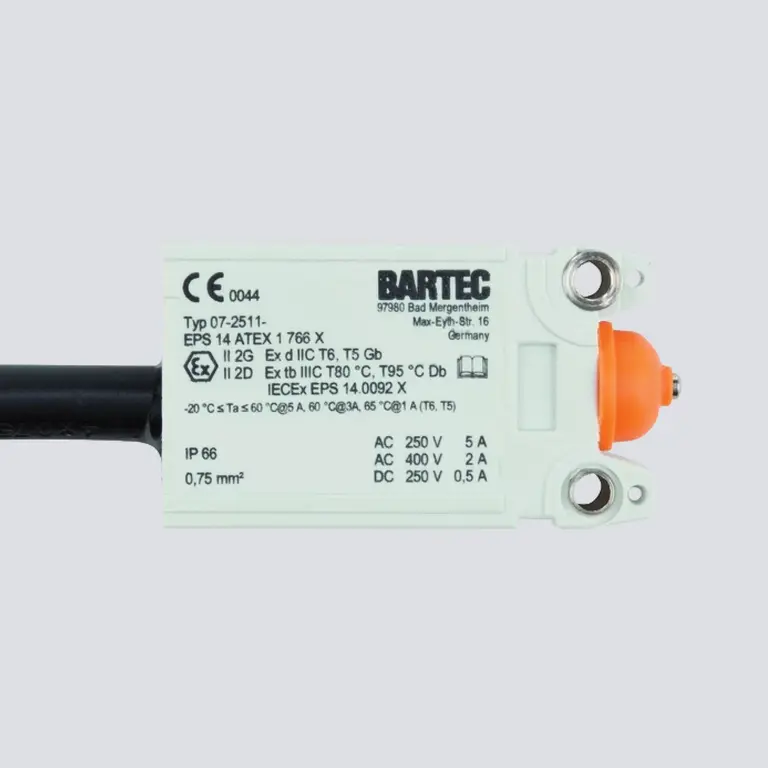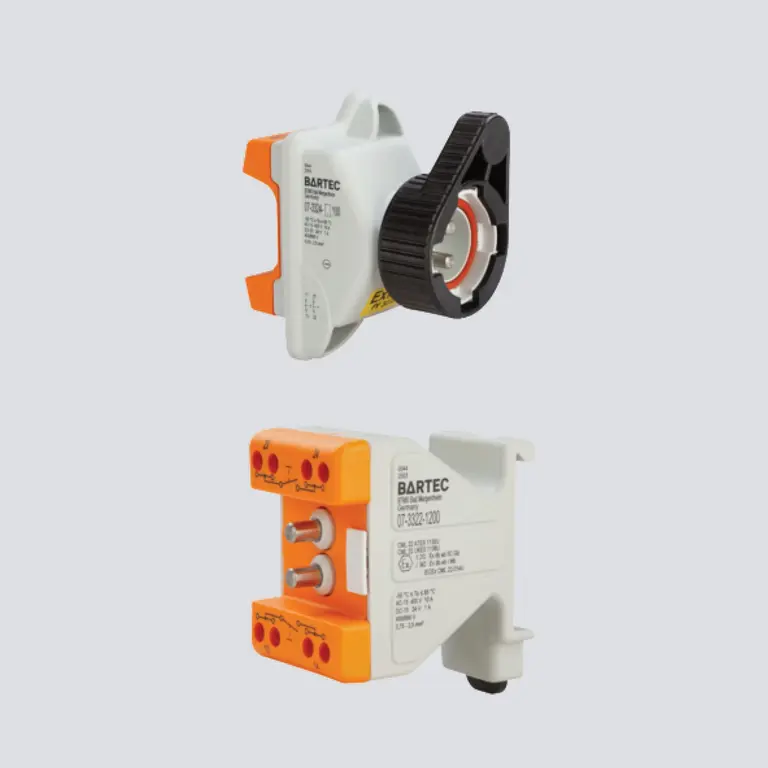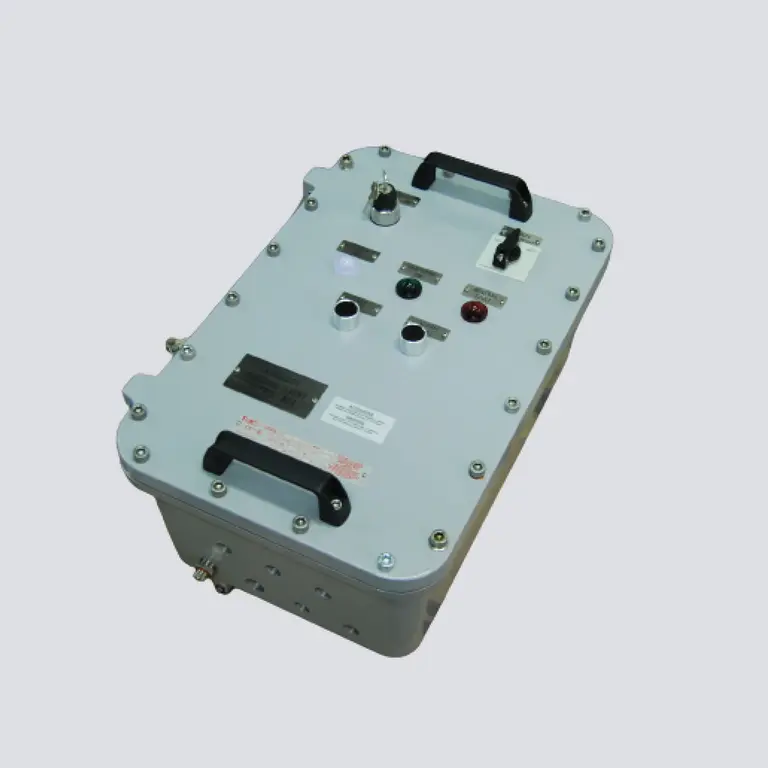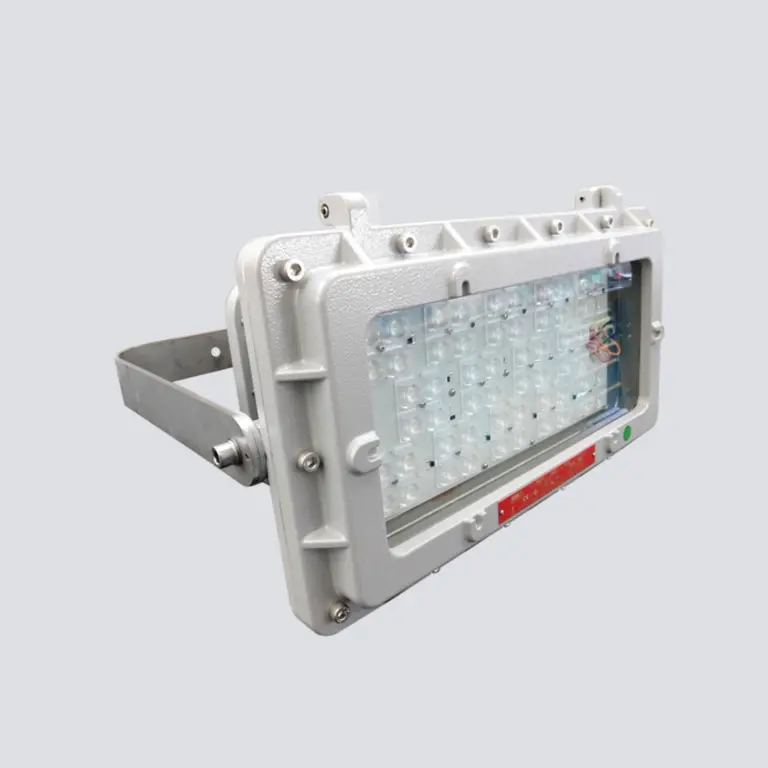What does the term Intrinsically Safe mean?
Intrinsically Safe is the prevention of ignition by limiting energy - the circuit simply cannot generate enough energy to spark or heat up to dangerous levels.
Intrinsically Safe technology plays a vital role in protecting lives and assets in hazardous areas, especially in industries like oil and gas, mining, and chemical processing. By limiting the energy available for ignition, Intrinsically Safe equipment ensures that operations can continue safely even in the presence of flammable gases or dust. As safety standards evolve and technology advances, investing in Intrinsically Safe solutions is not only a regulatory requirement but a smart, forward-thinking decision for any company operating in explosive atmospheres.
BARTEC has a wide offer of Intrinsically Safe products and solutions like our newest Intrinsically Safe BARTEC SP9EX1 Smartphone. See our highlights below.
What does the term Explosion Proof mean?
Explosion Proof encloses the equipment in a strong, robust enclosure that can withstand an internal explosion and prevent the flame or hot gases from escaping and igniting the surrounding atmosphere. It’s made to contain any explosion that happens inside the device.
Such enclosures are typically made from robust materials like cast iron, stainless steel or aluminum, and in some cases, reinforced plastics. Their purpose is to ensure that any internal ignition does not trigger an external explosion in hazardous environments.
In simple terms, Explosion Proof equipment is designed with a heavy-duty enclosure of sufficient mass and strength to safely contain an internal explosion.
It is important to note, however, that the terms “Explosion Proof” and “Flameproof” are not interchangeable. While closely related, they refer to different protection concepts with subtle but important distinctions.
What is the meaning of Flameproof?
A Flameproof enclosure is designed so that:
- If an explosion occurs inside the equipment, the enclosure will withstand the pressure without rupturing.
- The hot gases or flames are forced to pass through carefully designed joints, gaps, or flame paths (like threaded covers or flanges).
- By the time these gases exit the enclosure, they have cooled enough so they cannot ignite the surrounding explosive atmosphere.
So, while Explosion Proof (a term more common in North America) emphasizes containing the explosion inside a rugged housing, Flameproof (used internationally, especially in IEC standards) emphasizes controlling and cooling the escaping gases so that they cannot spread the explosion outside.
The Difference between Intrinsically Safe and Explosion Proof
In conclusion:
- Intrinsically Safe = is the prevention of ignition by limiting energy
- Explosion Proof = enclosure strong enough to contain the explosion.
- Flameproof = enclosure designed to withstand explosion and prevent the released energy to ignite the external atmosphere.
The difference between Intrinsically Safe vs. Explosion Proof vs. Flameproof
Aspect | Explosion Proof | Flameproof | Intrinsically Safe (IS) |
Origin of Term | Common in North America (NEC). | Common in IEC/EN standards (IEC 60079). | International concept (IEC/EN/ATEX, NEC). |
Principle | Enclosure is built strong enough to withstand and contain an internal explosion. | Enclosure is designed to withstand internal explosion and prevent the released energy to ignite outside. | Equipment and wiring are designed so that energy levels (electrical and thermal) are too low to ignite an explosive atmosphere. |
Key Function | Containment – keeps explosion inside. | Flamepaths – prevent external ignition. | Prevention – ensures ignition energy never exists. |
Materials | Heavy-duty (cast iron, aluminum, steel). | Robust housing with precision-machined flame paths. | No heavy enclosure needed; relies on energy limitation (circuits, zener barriers, isolators). |
Design Emphasis | Mechanical strength, rugged housing. | Flame path length, joint dimensions, cooling surfaces. | Low voltage, low current, energy-limiting design. |
Size/Weight | Typically, bulky and heavy. | Also heavy, though sometimes smaller than Explosion Proof. | Usually lightweight and compact. |
Maintenance/Installation | Can be difficult due to heavy enclosures. | Requires careful handling of flame paths and threaded covers. | Simplest to install and maintain (safe even when equipment is live). |
Typical Use Cases | Motors, junction boxes, lighting fixtures in hazardous areas. | Control panels, switchgear, equipment in IEC-based markets. | Instrumentation, sensors, transmitters, handheld devices. |
Best Suited For | High-power equipment. | Medium/high-power equipment. | Low-power devices and electronics |
How can you choose the best method of protection for a particular plant?
The selection of an appropriate protection concept must be based on the specific characteristics and operational requirements of the plant. Several technical factors should be considered:
- Cost efficiency: Intrinsically Safe (IS) systems typically involve lower capital expenditure compared to Explosion Proof (Ex d) systems.
- Power availability: Intrinsic Safety requires strict limitation of available energy (voltage, current, and stored energy), which can restrict use in applications with higher power demand. Explosion Proof enclosures, by contrast, are suitable for high-power equipment since the protection concept does not impose limitations on load power.
- Maintenance procedures: IS circuits can, under defined conditions (per IEC 60079-14 and IEC 60079-17), be maintained and worked on while energized, as they are incapable of releasing sufficient energy to ignite an explosive atmosphere. Ex d equipment does not allow live maintenance; power isolation is mandatory before any intervention.
- Wiring methods: IS wiring is simplified, requiring only an associated apparatus (e.g., safety barrier or galvanic isolator) and standard cabling, without the need for Explosion Proof conduit or sealing fittings. In contrast, Ex d installations require flameproof cable entries, conduit systems, and sealing devices to prevent flame transmission and ingress of hazardous gases.
A further distinction is in the permitted area classification according to IEC/NEC standards:
- Intrinsic Safety (Ex i): certified for use in Zone 0, Zone 1, and Zone 2 / Class I, Divisions 1 and 2 (NEC500).
- Explosion Proof: certified for use in Zone 1 and Zone 2 / Class I, Division 1 and 2 and 2 (NEC500).
- Flameproof (Ex d): certified for Zone 1 and 2 / Class I, Division 2 (NEC505)

